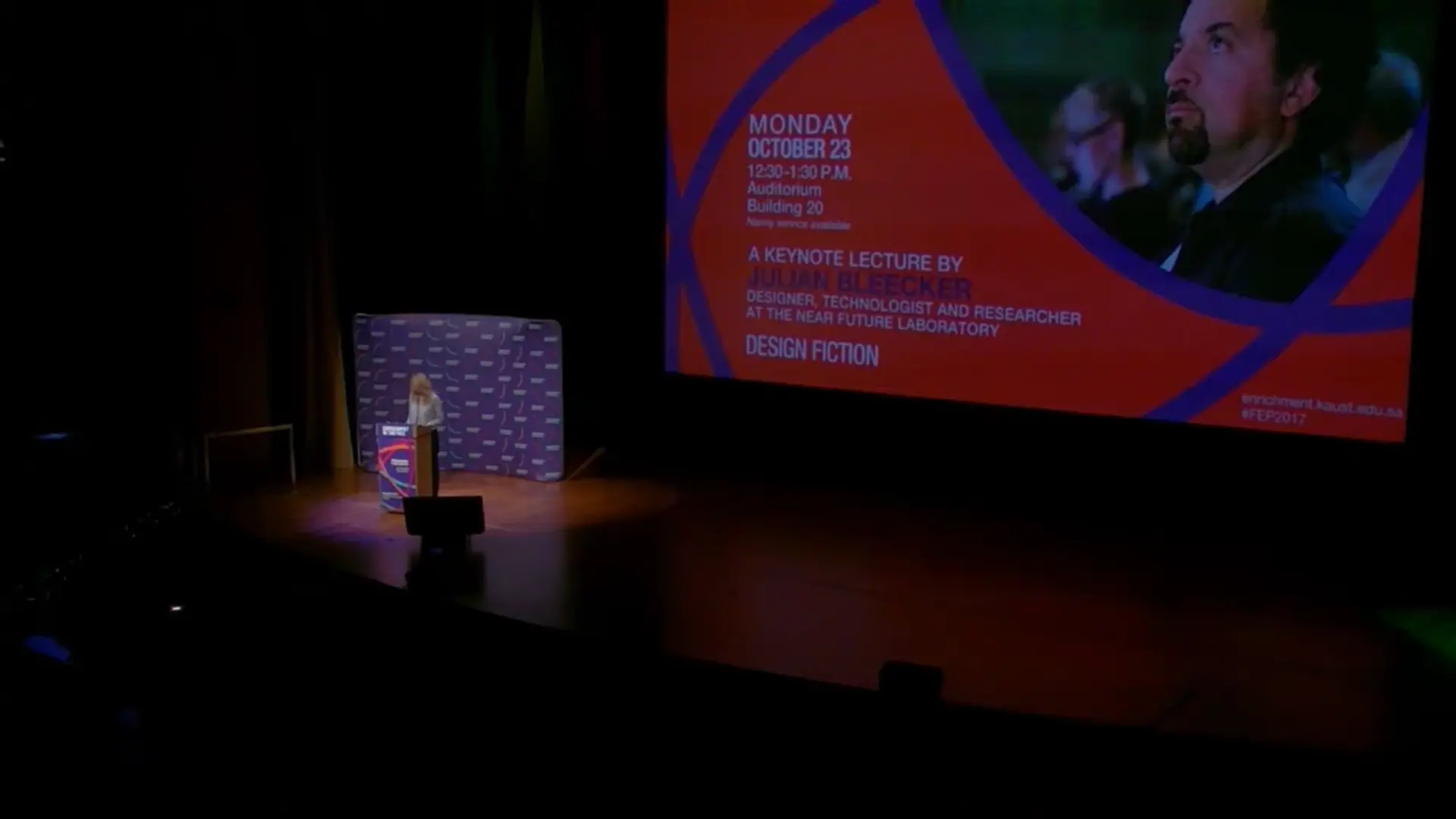
Talk Date: 10/23/17, 1:00 AM
Published On: Oct 22, 2024, 07:04
Updated On: Oct 22, 2024, 07:04
I had the opportunity to present at the King Abdullah University of Science and Technology during their fall enrichment program. So, I thought bringing the principles and approaches of Design Fiction would be a way to introduce Near Future Laboratory and share how there I create prototypes meant to spark discussions about future possibilities. Popular films, like Jurassic Park and 2001: A Space Odyssey, serve as examples of ‘diegetic prototypes,’ influencing public understanding of science and technology.
I explained the impact of science fiction on real-world technology, with some examples such as special glasses reminiscent of today’s augmented reality that appear in the John Carpenter film ‘They Live’ and the futuristic elements in ‘2001: A Space Odyssey’ that are things we now take for granted, like conversational AI. One highlight was the short film ‘Curious Rituals’ that is a kind of prototyping-exploration of future gesture interfaces, showcasing technology’s potential challenges.
We also explore how shows like Star Trek inspire technological advancements and design thinking. Interestingly, repair manuals for fictional objects, such as the Millennium Falcon, enhance our understanding of technology and influence design approaches. This led to our hands-on projects, like creating a quickstart guide for a hypothetical self-driving car, illustrating the importance of clear, concise instructions for diverse audiences.
Throughout my talk, I addressed practical features for future self-driving cars, touching upon aspects like manual override systems and car-sharing logistics, all explored through rapid prototyping. The concept of ‘design fiction,’ using whimsical and fantastical future products, was a key theme, emphasizing that future innovations could become as accessible as items in a dollar store.
I ended by discussing the integration of design fiction in education, highlighting its growing acceptance and practical application in design and engineering schools. Using real-world collaboration examples, like our project for IKEA’s future, I illustrated how this methodology helps organizations envision potential innovations. The session concluded with thoughts on the power of serendipity in uncovering unexpected, useful ideas, encouraging audience engagement on social media for continued discussion.